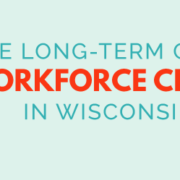Agency Staffing Survey Reveals Acute Labor Shortage
MITC recently conducted a staffing survey of 137 agencies employing nearly 40 thousand people across the United States. The results showed a severe shortage of direct service professionals (DSPs). As they struggle to deliver vital services to a vulnerable population, agencies are looking for ways to hire more employees and retain the ones they have.
Across the board, from smaller agencies with less than 50 employees to the largest providers with over 2,800 employees, agencies reported an excessive number of open positions, primarily for DSPs. The average agency employed 320 people when fully staffed and had 25 open positions (nearly 8 percent). The total number of open positions was over 3 thousand.
The Hidden Costs of a Labor Shortage
An employee shortage is not just inconvenient; it is costly. For example, agencies have responded to the shortage by authorizing more overtime. Of the agencies who participated in the survey, 65 percent reported overtime was higher than they wanted.
Overtime is not the only cost of the labor shortage. Turnover costs money, both directly and indirectly. Direct costs include overtime, lost billing if services cannot be delivered, recruitment activities, and fill-in staffing. Indirect costs include lost productivity while managers are busy interviewing and training new employees. Less obvious, but no less costly, are the negative impacts to staff morale and performance, which can lead to diminished quality of client care. Among the survey respondents, turnover rates varied quite a bit. For example, agencies in Maryland, New York, and Pennsylvania reported turnover rates under 10 percent, while some agencies the Carolinas, Indiana, and Illinois reported DSP turnover rates as high as 80 percent. This is not surprising, since the states with the lower turnover rates are able pay about 20 percent more for DSPs.
As if the shortage isn’t difficult enough, agencies also reported problems with the quality of applicants among those who are available. Common problems were applicants who failed drug or background checks, had no relevant skill sets, failed to complete training, had poor concepts of attendance responsibilities, or did not show up for interviews/training.
Ways to Improve Retention and Hiring Rates
Almost all agencies participating in the survey have already taken steps to improve their hiring and retention rates. These steps include:
- Better applicant screening to concentrate resources on those most likely to stay
- Annual review of retention and on-boarding process
- Improved, more organized on-board training
- Working with local colleges, such as nursing schools
- Emphasizing total compensation value, rather than hourly rate
- Developing career ladders
- Referral bonuses and new hire bonuses
- Graduated pay scales
- Early access to benefits
- Mentoring/buddy programs
- Contests and awards
- Employee appreciation days and events
- Monthly staff newsletter
- Shift differentials
- Profit sharing
In addition to these things, agencies can focus on several areas to increase retention and attract workers.
Follow Good Scheduling Practices
One of the biggest complaints employees have is lack of advance notification for schedules. Poor scheduling or last minute changes can cause conflicts with your employees’ home lives. A DSP will be much less motivated to show up if they are constantly being rescheduled, especially at short notice. Frequent rescheduling leads to a culture of frustration and uncertainty in your workforce, and it encourages absenteeism and turnover.
When scheduling employees, it is important to track their preferences and restrictions. This will help you avoid calling them in to cover shifts they can’t take. Capture these preferences during the new hire process. Also, allow enough time between shifts for employees to rest, and avoid calling employees who have just finished a shift back in. Also, planning for holidays well in advance can avoid disruption and lead to better attendance.
Good scheduling practices, together with an accurate time & attendance system, help your agency track frequent offenders who regularly show up late, leave early, or call in sick. These employees set a bad example to others, causing lower productivity and more overtime.
Of all the agencies that participated in the staffing survey, 42 percent are considering new scheduling systems. Additionally, agencies reported that they had already changed some of their scheduling practices by:
- Investing in new scheduling software
- Allowing flexibility in how different sites schedule staff
- Introducing rotating weekend shifts (one on, one off)
- Creating more full-time positions
- Increasing the number of part-time staff
- Creating scheduler position(s)
- Monitoring hours to ensure employees get breaks
- Scheduling longer shifts on fewer days
- Using salaried staff to cover open shifts
Empower Employees Through Self-Service
Employee self-service refers to a system that gives employees a certain amount of autonomy. For example, an online self-service system allows employees to see their schedules, who they are working with, which shifts are open, their PTO balances, and more. This saves time for you and your staff. It also reduces the amount of phone calls and emails between you.
Another popular self-service feature is an automated text or email alert system to remind employees about licenses, training deadlines, upcoming reviews, and more. An alert system can also send birthday and anniversary greetings or HR updates. It can improve communication between employees and managers, too, by sending notices when PTO is requested or approved. Using text/email reminders to notify employees of their next shifts can also reduce absenteeism and helps motivate employees. On the same token, including a digital checklist to assign duties helps employees know what they are meant to do; this is especially helpful if an employee is covering a shift for someone else.
Recognize Excellent Employees
Employees like to feel like their hard work is being rewarded. To do this, make sure your agency provides clear career paths for DSPs. Give them written guidelines on what factors will help them advance, such as good attendance records. Reward hard-working DSPs by gradually increasing their responsibilities. A DSP who has advanced from an entry-level position to a manager role is more likely to be loyal than one who has done the same job for years. For this reason, try to promote from within your agency workforce, rather than recruiting outsiders.
Also, employees want to know where they could be headed and how they can get there. Annual reviews or mid-year check-ins are one obvious venue for these discussions, but also encourage workers to come to HR with career questions and wishes throughout the year.
When excellent employees leave your organization, conduct exit interviews. You may even consider asking longer-tenured employees why they stay. Ask questions such as: Why did you come to work here? Why have you stayed? What would make you leave? What are your non-negotiable issues? How about your managers? What would you change or improve?
While there are no quick fixes for overtime or turnover, making a few key changes can increase caregiver retention and help alleviate the challenges agencies face by caregiver shortages.








 2018 MITC
2018 MITC 2018 MITC
2018 MITC
Leave a Reply
Want to join the discussion?Feel free to contribute!